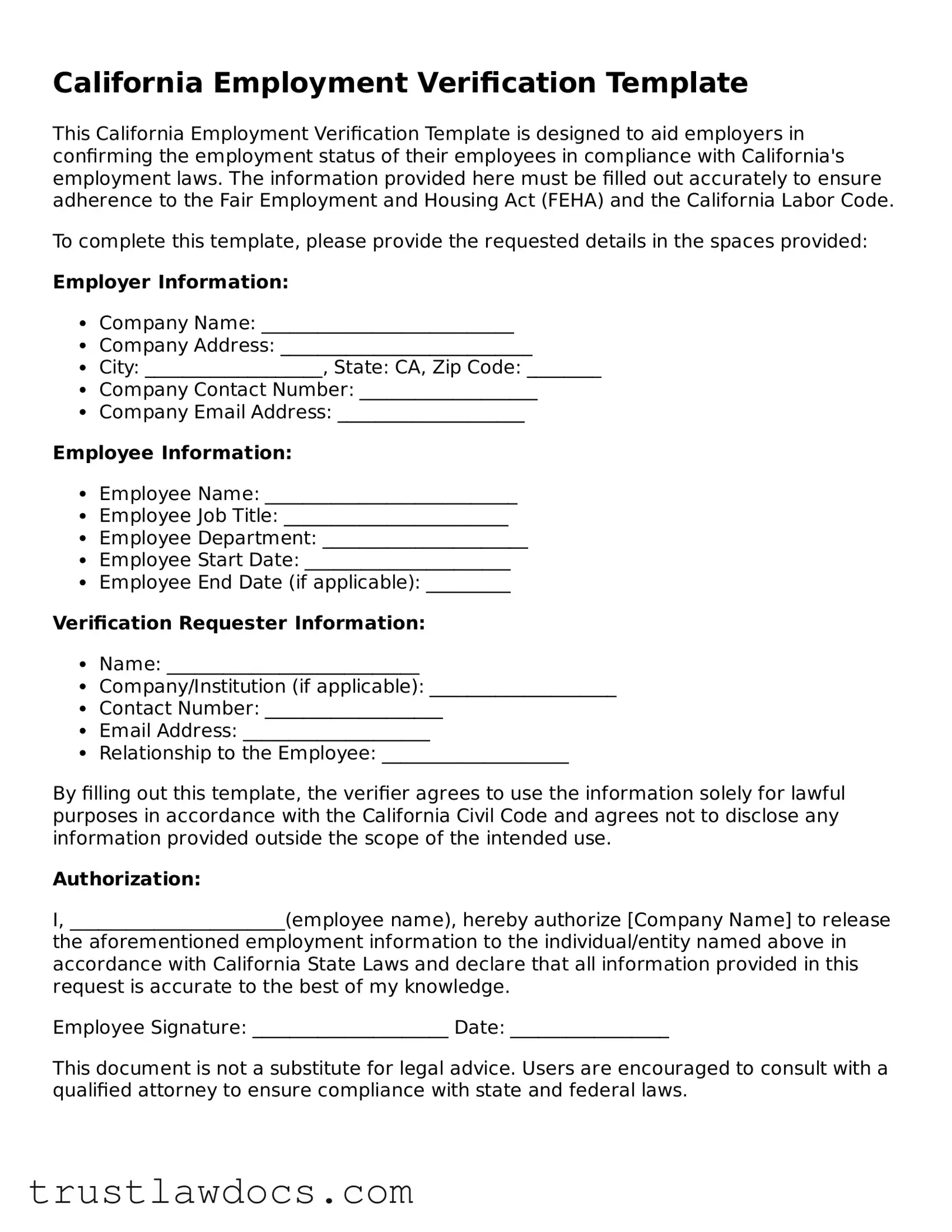Filling out the California Employment Verification form accurately is crucial for securing employment. A common mistake people make is not checking the form for errors before submission. Even small inaccuracies can delay the hiring process, or worse, imply dishonesty. It's important to double-check every entry for correctness.
Another frequent error is providing incomplete information. The form asks for specific details about your employment history, personal information, and eligibility to work in the United States. Skipping sections or leaving fields blank can result in the form being returned for completion, thereby delaying the hiring process.
Many individuals mistakenly think they don’t need to list all prior employment. It's important to be thorough and include every job, as gaps in employment can raise questions. Each position, no matter how short-lived or seemingly irrelevant, provides a fuller picture of your work history.
Using unclear or illegible handwriting is another pitfall. In today's digital age, most forms are filled out online, but if you must fill out the form by hand, ensure your writing is neat and readable. Unclear handwriting can lead to misinterpretation of critical information, such as contact details, hindering employers from verifying your employment history.
A significant oversight is not signing the form. An unsigned form is often considered invalid, signaling an incomplete application process. Your signature is necessary to authenticate the form, confirming the accuracy of the information provided.
Applicants sometimes fail to follow instructions for completing the form. Each section comes with specific directions, and not adhering to these can result in mistakes or incomplete answers. It's essential to read each instruction carefully to ensure every part of the form is filled out correctly.
Not using the correct form or the most up-to-date version can also be problematic. Regulations and requirements change, and using an outdated form can mean leaving out newly required information or including obsolete details. Always verify you are using the latest version of the form.
Forgetting to update personal information is a common error as well. If you’ve recently moved or changed your contact information, make sure to provide your current details. Outdated information can lead to communication issues during the employment verification process.
Overlooking the necessity to provide evidence for eligibility to work in the U.S. is a serious mistake. The form typically requires documentation proof, such as a passport or birth certificate. Failing to attach these documents can delay the verification process, as employers must ensure compliance with employment eligibility verification laws.
Lastly, many people underestimate the importance of privacy when submitting their employment verification form. It's crucial to submit the form through secure channels to protect personal information from unauthorized access. Carelessness with how the form is submitted can risk personal data exposure.
Avoiding these common mistakes ensures the employment verification process proceeds smoothly and swiftly, bringing you one step closer to securing your new job.
